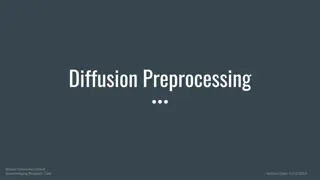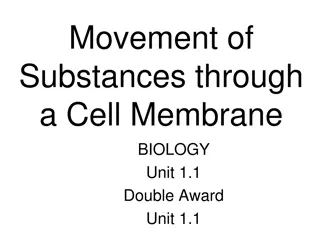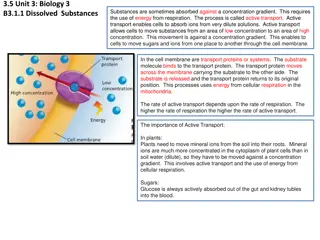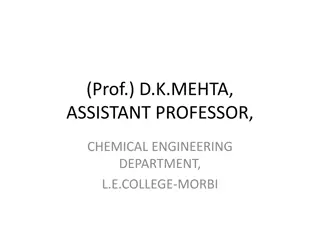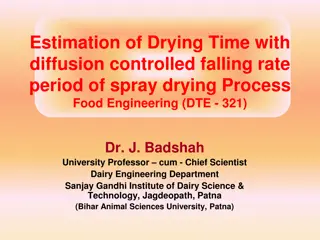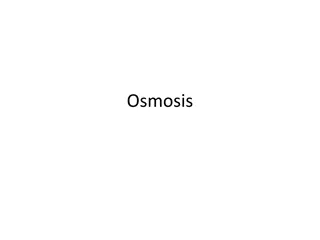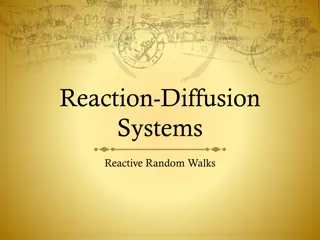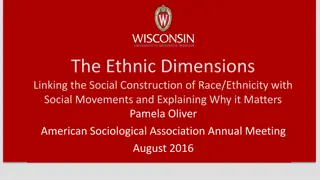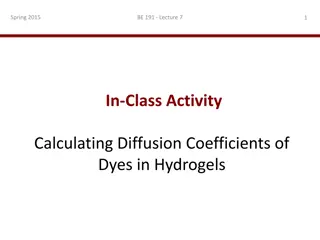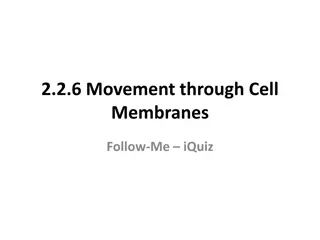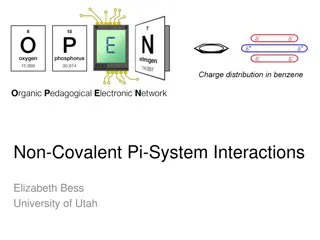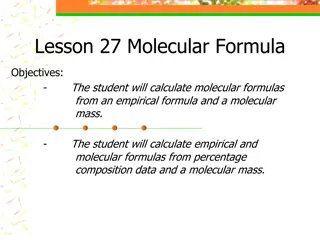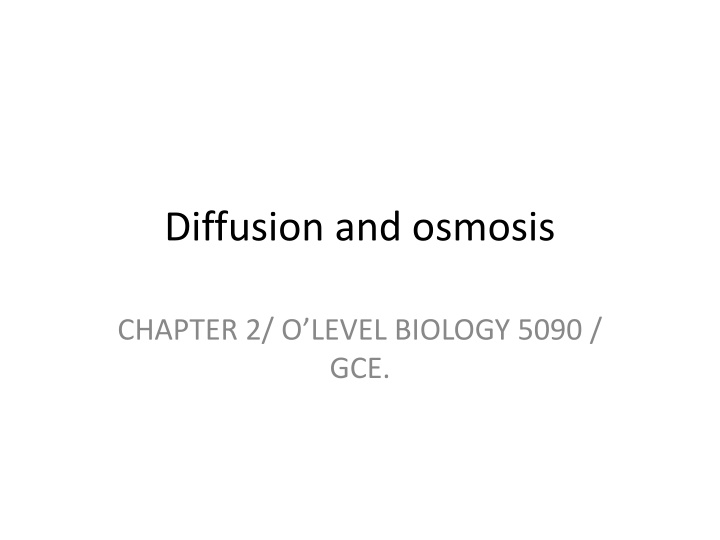
Diffusion and Osmosis Fundamentals: Understanding Molecular Movements
Diffusion, Osmosis, Biology, Learning, Molecules
Download Presentation

Please find below an Image/Link to download the presentation.
The content on the website is provided AS IS for your information and personal use only. It may not be sold, licensed, or shared on other websites without obtaining consent from the author. If you encounter any issues during the download, it is possible that the publisher has removed the file from their server.
You are allowed to download the files provided on this website for personal or commercial use, subject to the condition that they are used lawfully. All files are the property of their respective owners.
The content on the website is provided AS IS for your information and personal use only. It may not be sold, licensed, or shared on other websites without obtaining consent from the author.
E N D
Presentation Transcript
Diffusion and osmosis CHAPTER 2/ O LEVEL BIOLOGY 5090 / GCE.
2. Diffusion and osmosis Content 2.1 Diffusion 2.2 Osmosis 2.3 Active transport
Learning outcomes Candidates should be able to: (a) define diffusion as the movement of molecules from a region of their higher concentration to a region of their lower concentration, down a concentration gradient; (b) define osmosis as the passage of water molecules from a region of their higher concentration to a region of their lower concentration, through a partially permeable membrane; (c) describe the importance of a water potential gradient in the uptake of water by plants and the effects of osmosis on plant and animal tissues; (d) define active transport as the movement of ions into or out of a cell through the cell membrane, from a region of their lower concentration to a region of their higher concentration against a concentration gradient, using energy released during respiration. (e) discuss the importance of active transport as an energy-consuming process by which substances are transported against a concentration gradient, as in ion uptake by root hairs and glucose uptake by cells in the villi.
DIFFUSION The net movements of particles (atoms, ions or molecules) from a region of higher potential to a region of lower potential.
Potential Potential refers to concentration of substances at one particular location E.g. We sprinkle an aerosol spray in a room at one corner (say at point A), and take another reference point called B, than the concentration at each point is called potential at that point.
Concentration gradient From low to top is against concentrat ion gradient. Net movement of molecules From top to bottom Along concentr ation gradient Point A 100 molecules Point B 1 molecule
Kinetic molecular theory Why do the particle move All molecules posses kinetic energy, they vibrate and collide with each other which produces random motion. At point A, more molecules are present so more collision and more chances of motion. So particles have a higher chance to move from A to B.
Extent of diffusion Diffusion is continuous till the potential difference is lost between point A and B. Slope is zero So no diffusion happens here at this point. Point B Point A
So at equal potential what happens to kinetic energy? At equal concentration of point A and B, there is no diffusion. Although the molecules move from A to B and vice versa. Say e.g. 100 molecules move from A to B in 1 sec 100 molecules move from B to A in 1 sec. Net loss of molecules from A is zero and net gain is also zero, so no diffusion occurs, as diffusion considers only net movement.
Diffusion in various substances Diffusion is very fast in gasses Diffusion is slow in liquids Diffusion is impossible in solids
Diffusion in daily life Air freshener sprays Sugar dissolves uniformly in water Ink dissolves in water
Diffusion and cells The following substances enters cells by diffusion Carbon dioxide Oxygen water Diffusion of water is not called diffusion (when water enters a cell)
Osmosis Osmosis is diffusion of water molecules across a cell membrane Osmosis is movement of water molecules from higher potential to lower potential across a cell membrane Water could enter cell by osmosis Water could leave cell by osmosis (cell membrane allows freely only Water Carbon dioxide Oxygen) OR
Which solution have high water potential? Why water moves from A to B? Which solution have low water potential? Why not glucose move from B to A?
Water potential Water potential is amount of water present Water potential is always consider relative
Solution comparisons A is HYOTONIC as compared to B OR B is HYPERTONIC as compared to A C is HYPERTONIC as compared to B OR B is HYPOTONIC as compared to C ALL THESE ARE RELATIVE TERMS 10% glucose 15% glusose 5% glucose More water than B HYPOTONIC Less water than A HYPERTONIC Less water than B HYPERTONIC
Osmosis and living cells All the water is absorbed by cells via osmosis Cells can loose water by osmosis
A plant cell in solution of high water potential (HYPOTONIC) Water potential outside cell is high Water enters cells by osmosis (endosmosis) Absorbed water is stored in vacoule (store house of a cell). Cell size increase, it exert a force on cell wall, this force creates a pressure called TURGOR PRESSURE Such cell is called TURGID CELL
Normal cell, placed in solution with high water potential. Water enters cell by osmosis, TURGIDITY TURGOR PRESSURE
Animal cell in solution of high water potential (HYPOTONIC) Water enters the cell by osmosis Water is stored in vacoule Cell size increases Finally cell bursts
Animal cell placed in water with high water potential Cell absorb water and increase size Cell burst opens
Plant cell placed in solution of low water potential (HYPERTONIC) Plant cell will loose water by osmosis The cell size will reduces Called plasmolysis (shrinkage)
Animal cell placed in solution of low water potential (HYPERTONIC) When animal cell is placed in hypertonic solution, it losses water by osmosis Cell size reduces and phenomenon is called Crenation
Importance of turgor pressure in plants Tender (non woody) plants are erect because of turgor pressure Leaf movements Touch me not plant movement
Passive transport Transport along concentration gradient (higher to lower) osmosis diffusion
Active transport Movement of substances against concentration gradient. Minerals, foods (glucose, amino acids, fatty acids) are absorbed by active transport. Cell membrane have some pumps to absorb these substances against concentration gradient. Such pumps uses a lot of energy
Internal concentration is high Till cell absorb it

